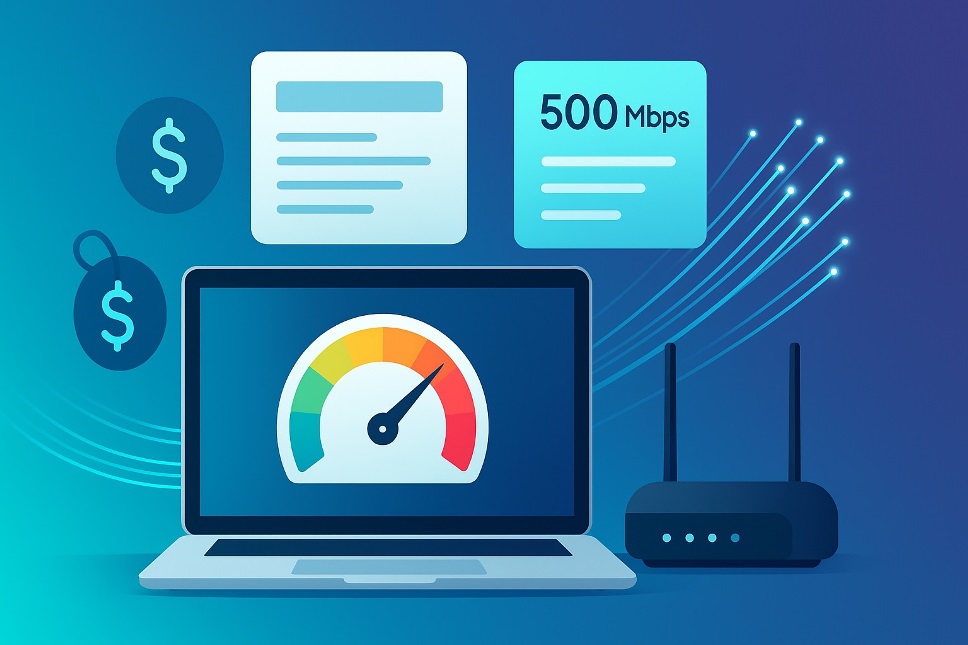
Choosing an internet plan shouldn’t feel like decoding a puzzle. This guide shows you exactly how to evaluate options on Zryly.com Internet—from speeds to real monthly costs—so you can make a confident choice for streaming, gaming, work-from-home, and everything in between. By the end, you’ll know how to confirm local availability, understand the fine print, and pick a plan that truly fits your household. We’ll keep the language simple, the steps clear, and the advice practical—no fluff.
- How to Use Zryly.com Internet to Compare Like a Pro
- Speeds: What Numbers Really Mean
- Prices: Find the Real Monthly Number
- Reliability and Performance: What to Check Before You Order
- Technology Types: Match the Network to Your Needs
- Deals and Timing: Maximize Value Without Getting Trapped
- How to Choose the Right Plan for Your Household
- The Bottom Line
How to Use Zryly.com Internet to Compare Like a Pro
Think in three layers: availability, performance, and total cost. When you explore options through Zryly.com Internet, follow this quick workflow:
- Enter your full service address to reveal providers that actually serve your location. If a site offers a ZIP-based lookup, use it to check internet availability by zip code once, then refine with your exact address for accuracy.
- Note the download and upload speeds for every plan, plus technology type (fiber, cable, DSL, fixed wireless, or satellite).
- Add up the true monthly cost: base price + equipment rental + required add-ons + taxes/fees.
- Scan fine print for data caps, contract length, promo expiration dates, and early-termination fees.
- Shortlist two or three finalists and compare them side by side on Zryly.com Internet before you order.
This structure keeps you focused on facts, not marketing.
Speeds: What Numbers Really Mean
Internet speed is more than a headline “up to” number. Here’s how to translate the jargon:
- Download speed controls how quickly you receive content (streaming, downloads, web pages).
- Upload speed controls how quickly you send content (video calls, cloud backups, creator uploads).
- Latency (ping) affects responsiveness in gaming and video conferencing.
- Consistency matters as much as top speed; look for providers with stable peak-hour performance.
If you can get fiber internet, it typically delivers strong uploads and low latency, which is excellent for remote work and content creation. Power users may seek gigabit internet for multi-user 4K streaming, large file transfers, and smart-home heavy lifting. If you’re outside wired footprints, evaluate 5G home internet or fixed wireless as flexible, contract-light alternatives—just confirm signal strength and any data management policies during peak times.
Prices: Find the Real Monthly Number
Promotional banners often show a low starting rate, but what matters is the price you’ll actually pay after you click “buy.” On Zryly.com Internet, build a total cost snapshot for each plan:
- Base price: The advertised monthly rate, including promo duration and the price after promo.
- Equipment: Modem/router rental or purchase cost; check if BYOD (bring your own device) is allowed.
- Fees: Activation, installation, one-time setup, or regional surcharges.
- Policies: Data caps (and overage charges), contract terms, and early-termination fees.
This “all-in” view lets you judge internet plans and prices fairly. If you’re budget-conscious, filter for cheap internet plans—but balance price with reliability and upload speeds, especially if you work from home or game online.
Reliability and Performance: What to Check Before You Order
Before you finalize anything on Zryly.com Internet, look beyond raw speed:
- Peak-hour stability: A plan that dips every evening can be worse than a slightly slower but consistent option.
- Upload for video calls: Aim for stable uploads if you stream, teach, or present online.
- Latency for gamers: Look for providers known to maintain low ping under congestion.
- Customer support: Scan provider pages for support hours, self-install guides, and outage dashboards so you know what to expect.
If you’re choosing among the fastest internet providers, prioritize low latency and dependable uploads alongside headline download numbers.
Also Read: Nippybox: An In-Depth Look at This Modern Cloud Platform
Technology Types: Match the Network to Your Needs

Different access technologies behave differently in real life:
- Fiber: Excellent for symmetrical speeds and future-proofing. Often the best experience for creators and remote workers.
- Cable: Widely available with high downloads; uploads can be lower than fiber but are improving in many markets.
- DSL: Reliable for basic browsing and email, but speed ceilings may be low depending on distance to the network node.
- Fixed Wireless/5G: Quick setup and competitive pricing in some areas; performance can vary with signal quality and network load.
- Satellite: Expands access where there’s no wired option; latency is improving with newer constellations, but confirm data policies.
When you compare internet providers, weigh not just speed and price but also how each technology behaves during busy hours in your neighborhood.
Deals and Timing: Maximize Value Without Getting Trapped
Promotions change frequently. When browsing Zryly.com Internet, look for home internet deals that align with your timeline and needs—without locking you into terms that outlast the promo value. A few tips:
- If installation is optional, self-install can save money.
- Buying your own modem/router may lower monthly costs, but confirm compatibility.
- Track the month when your promo ends and calendar a reminder to reevaluate or renegotiate.
If you’re hunting the market for the best internet providers, consider more than the sticker price—support, reliability, and contract flexibility can easily outweigh a small monthly discount.
How to Choose the Right Plan for Your Household

Start with your heaviest use cases and work backward:
- Streamers & families: Multiple 4K streams and smart devices demand higher downloads and solid Wi-Fi coverage.
- Remote workers & creators: Prioritize uploads, latency, and a stable connection during business hours.
- Gamers: Latency and jitter matter more than raw speed once you’re past a reasonable baseline.
- Rural users: Evaluate fixed wireless and satellite carefully, paying special attention to data policies and evening performance.
As you finalize on Zryly.com Internet, confirm install dates, equipment details, and cancellation terms in writing so there are no surprises later.
The Bottom Line
A great internet choice is local, transparent, and aligned with your day-to-day usage. Use Zryly.com Internet to surface providers that serve your exact address, then compare speed, reliability, and the true monthly price—today and after promos. If you take ten minutes to verify details and read the fine print, you’ll avoid bill shock, buffering, and buyer’s remorse. With a short, structured process and clear priorities, Zryly.com Internet can help you land a plan that simply works—at a price that makes sense.
FAQs
1) How many Mbps do I really need for a small household?
For one or two light users, 50–100 Mbps download usually covers HD streaming, browsing, and video calls. Add more headroom if you stream 4K or have many smart devices.
2) What’s the difference between download and upload speed?
Download controls how fast you receive content; upload controls how fast you send it. Upload is essential for live meetings, backups, and creator workflows.
3) Do I need a special router for higher speeds?
If your plan exceeds a few hundred Mbps, use a modern Wi-Fi 6 or better router and ensure your modem supports your provider’s speed tier and technology.
4) How can I lower my internet bill without switching providers?
Return rented equipment you don’t need, use your own compatible modem/router if allowed, and ask support to match new-customer pricing when your promo ends.
5) What should I check on installation day?
Verify your wired speed near the modem, confirm Wi-Fi coverage in rooms where you work or stream, and test a video call during peak hours to ensure stability.



